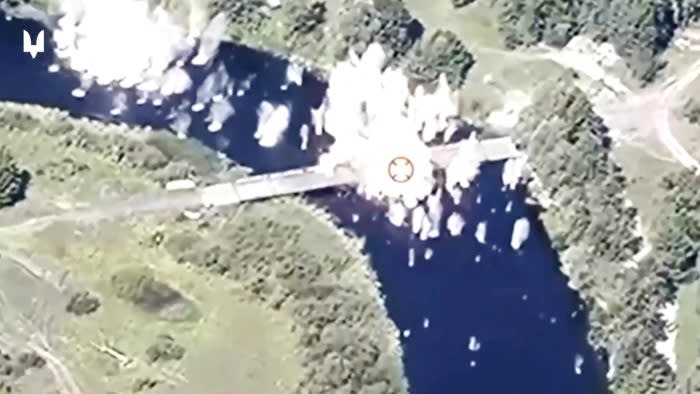Stay informed with free updates
Simply sign up to the War in Ukraine myFT Digest — delivered directly to your inbox.
The head of the UN’s nuclear watchdog is to visit an atomic power station in Kursk, south-west Russia, saying he is taking “very seriously” the risk that the facility could be damaged during Ukraine’s incursion into the region.
Rafael Grossi, director-general of the International Atomic Energy Agency, told the Financial Times in an interview that the Kursk plant was “technically within artillery range” of Ukrainian positions. “And since there is combat, I’m very concerned.”
Grossi said he would visit Kursk next week to talk to its managers and gather any evidence of whether it had already been targeted. He also wanted to assess the state of external power supply and access routes to the plant, noting the recent Ukrainian destruction of bridges across the Seym river in the west of the region.
Ukrainian forces have advanced to positions some 30km from the station, according to military analysts and open source intelligence, putting it within range of their rocket artillery and western-supplied howitzers.
Kyiv has said little about its objectives for the audacious incursion, beyond establishing a buffer zone to protect its border regions and strengthening its position for possible future peace negotiations.
Moscow has accused Ukraine of preparing to attack the plant. Ukrainian officials and commanders have given no indication that the facility is a target or that its seizure is an aim of their offensive.
The nuclear station is situated about 40km west of Kursk, a city of 500,000 people. It has two active reactors, two decommissioned older units and two partly built ones.
The two operating reactors are of a so-called RMBK design, like the one involved in the Chernobyl disaster, and have no protective dome.
“It’s a Chernobyl-type plant”, Grossi said, with the reactor core “totally exposed”.
“I’ve visited a few of these. You can walk around and see the fuel elements that go down, as if it was a sports hall or something,” Grossi said.
The proximity of the site to the fighting between Russian and Ukrainian troops was of “special concern”, he added, because of the two fully functioning reactors.
The Zaporizhzhia nuclear power station in south-eastern Ukraine captured by Russian forces soon after their full-scale invasion was also operating at the time of its seizure, causing widespread concern about safety, but has since been placed in so-called “cold shutdown” mode.
Moscow seized the Zaporizhzhia plant despite agreeing to UN principles that nuclear stations should never be attacked or occupied militarily.
The station was taken over with help of Rosatom, Russia’s atomic energy operator and reactor builder, and has been occupied for two and a half years.
Since its seizure, Russia and Ukraine have each accused the other side of striking parts of the site with artillery and drones, most recently on August 18.
Asked whether his visit to Kursk was at Moscow’s request, Grossi replied: “I suggested if they want me to take a position, the agency would have to have access to the plant. And they invited me.”


